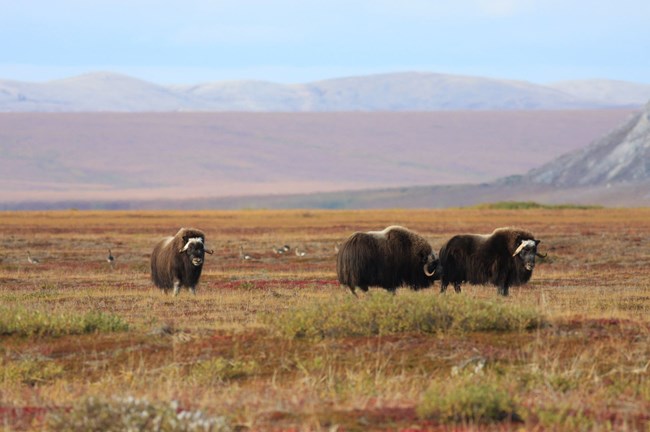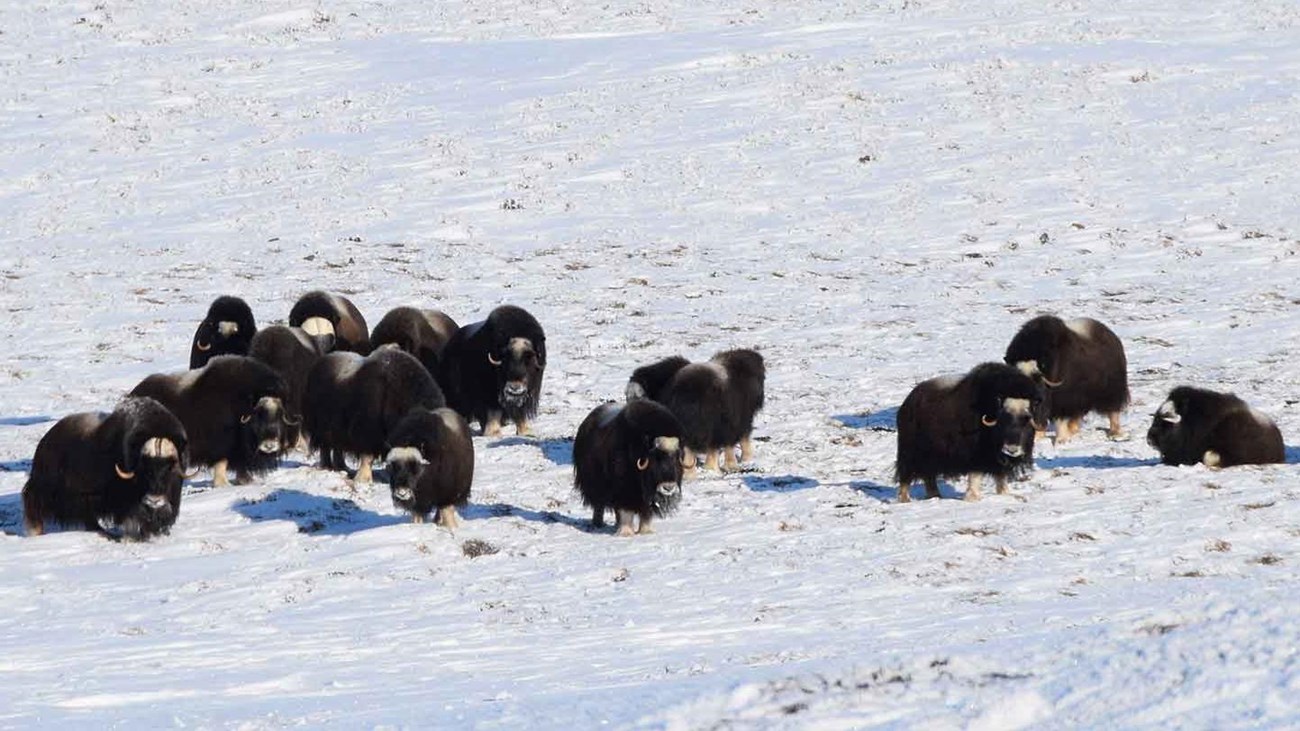
NPS
Muskoxen live in complex social circles. You may often see a herd of up to 75 muskoxen frolicking through the tundra, loafing in meadows or splashing around in puddles. Late summer and autumn is breeding season for these hairy beasts, but before romance can ensue dominance must be fought for. Bulls will often push each other, lock their horns, or bellow like lions. When danger approaches muskoxen stick together. There clever defense strategy has protected them from wolves and other predators. If there is only a single predator, muskoxen form a line of defense in the direction of that predator. If there are multiple predators the muskoxen form a circle with their heads and horns all facing outward, making the circle impenetrable. Calves will stay near their mother or be at the center of the circle.

Monitoring Muskoxen in the Arctic
The Arctic Network monitors trends in muskox abundance, distribution, and sex and age composition among herds.
Last updated: July 16, 2019
